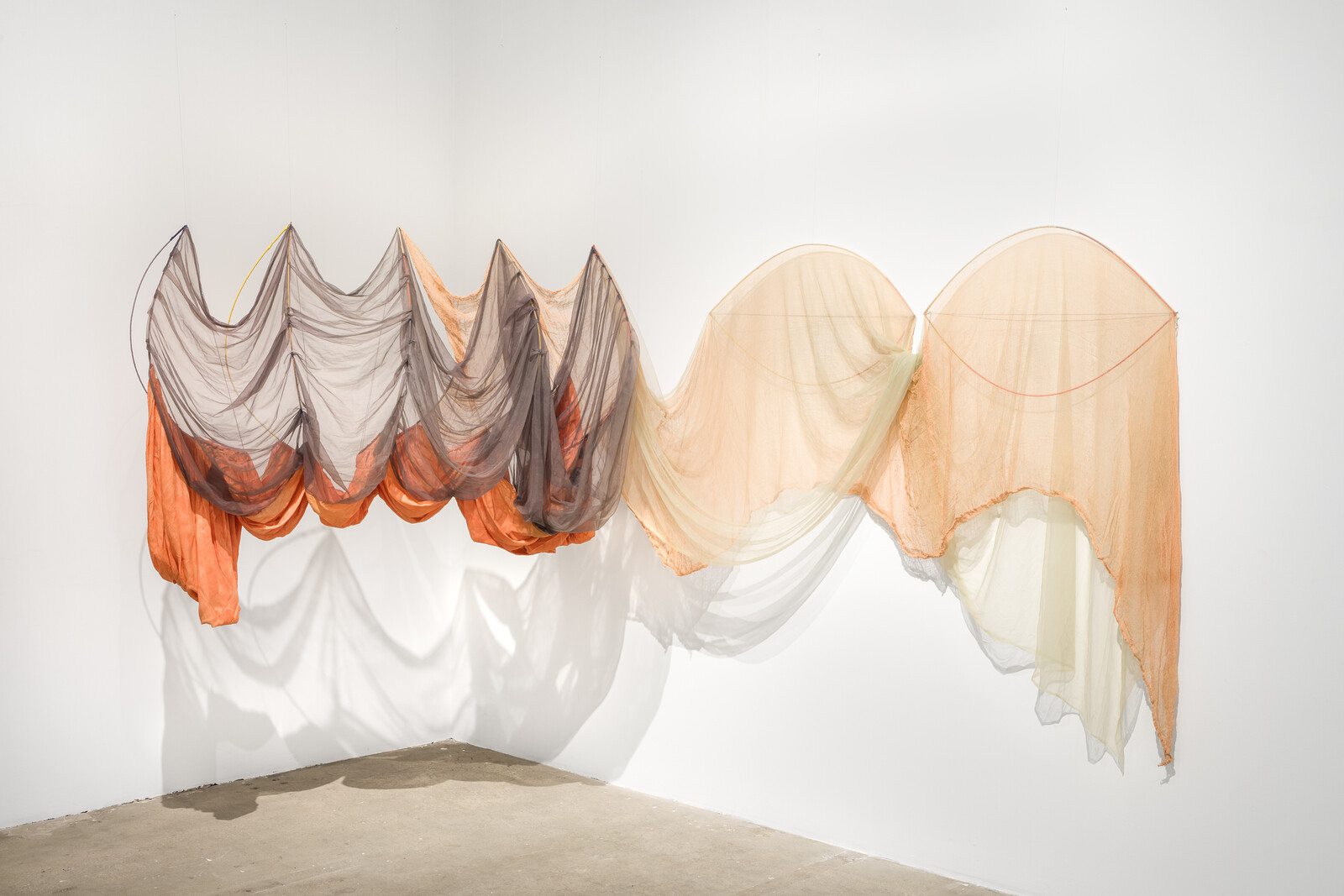Ways of Attaching
June 11–September 18, 2022
Luisenstraße 33
80333 Munich
Germany
For Rosemary Mayer (1943–2014)—artist, author, translator—sculpture was a field of all but unlimited possibilities. Mayer’s objects made of delicate fabrics seem to defy the law of gravity. The sculpture The Locrian Mode is composed of paper-thin wooden slats, pulled into precarious balance in a test of flexural strength. Her fleeting and festive Temporary Monuments, outdoor installations made of balloons and snow, embody Mayer’s own notion of a social sculpture in motion: “The art object should not be still, unmoving, and independent of its circumstances. Nothing is,” the artist wrote in 1978. Through the lens of the art of her time, Mayer interpreted different traditions and genres to formulate her own artistic idiom: In her work, the cool detachment of Minimalism rubs shoulders with Mannerist painting, Baroque cultural history, the exuberance of Rococo architecture, the writing of mystical medieval authors and contemporary poets.
This exhibition is the first survey of the artist’s idiosyncratic oeuvre. Our title Ways of Attaching is purposefully equivocal: Attaching is a method for binding materials together, as well as one for establishing emotional connections with friends and peers, past and present, which was central to Mayer’s understanding of art. At Lenbachhaus, the focus is on Mayer’s sculptural methods of draping, knotting, stretching, and balancing; methods which metaphorically extend into the artist’s larger practice of drawing, writing, and performance through the 2000s.
Before pursuing art, Mayer studied Classics, and its influence carries through her work which is populated by literary references and historical figures. After experimenting with Minimalism and conceptual art, Mayer began a series of textile sculptures in 1971, and soon started naming them after women of the Middle Ages and Antiquity: Galla Placidia, regent of the Western Roman Empire in the 5th century, joined Hypsipyle, the mythological queen of Lemnos, or Hroswitha, the early medieval poet Hrotsvit of Gandersheim. Mayer was a feminist. She was a member of a women’s group with her friend Adrian Piper, and co-founded New York’s A. I. R. Gallery in 1972, the first and now legendary cooperative by and for women in the United States. She left the A. I. R. after a short time due to political differences, and so scission also takes its place among Mayer’s methods.
As a New Yorker who also wrote art criticism and essayistic texts, Mayer was involved in a lively art and literary scene. This included her sister, the poet Bernadette Mayer, and her husband during the 1960s Vito Acconi, editors of the 0 TO 9 experimental journal to which Rosemary was a regular contributor. Another meaningful encounter for Mayer took place with the painting of Italian Mannerists such as Rosso Fiorentino and Jacopo Pontormo, whose diary she translated and annotated over several years. Her journey to Italy and southern Germany in 1975 in the footsteps of these and other artists also brought her to Munich. There the artist was particularly fascinated by the buildings of the Asam brothers, as her exhibited artistic travel diaries Passages and Two Years testify.
Rosemary Mayer: Ways of Attaching was organized in collaboration with Marie and Max Warsh of the Rosemary Mayer Estate and in partnership with Swiss Institute, New York; Ludwig Forum, Aachen and Spike Island, Bristol. With an exhibition display by Fotini Lazaridou-Hatzigoga, Berlin.
Curated at Lenbachhaus by Stephanie Weber.
Program
June 10, 7pm
Exhibition opening: Lenbachhaus Munich cordially invites you and your friends to the opening of Rosemary Mayer: Ways of Attaching.
June 11, 2pm
Book presentation of The Letters of Rosemary & Bernadette Mayer, 1976–1980. With Marie Warsh and Max Warsh, directors of the Rosemary Mayer Estate. Moderated by Laura McLean-Ferris, Curator, Swiss Institute New York. In English.
June 12, 2pm
Guided tour through the exhibition with Marie Warsh, niece of the artist and director of the Estate of Rosemary Mayer, and Stephanie Weber, curator of the exhibition. In English.



